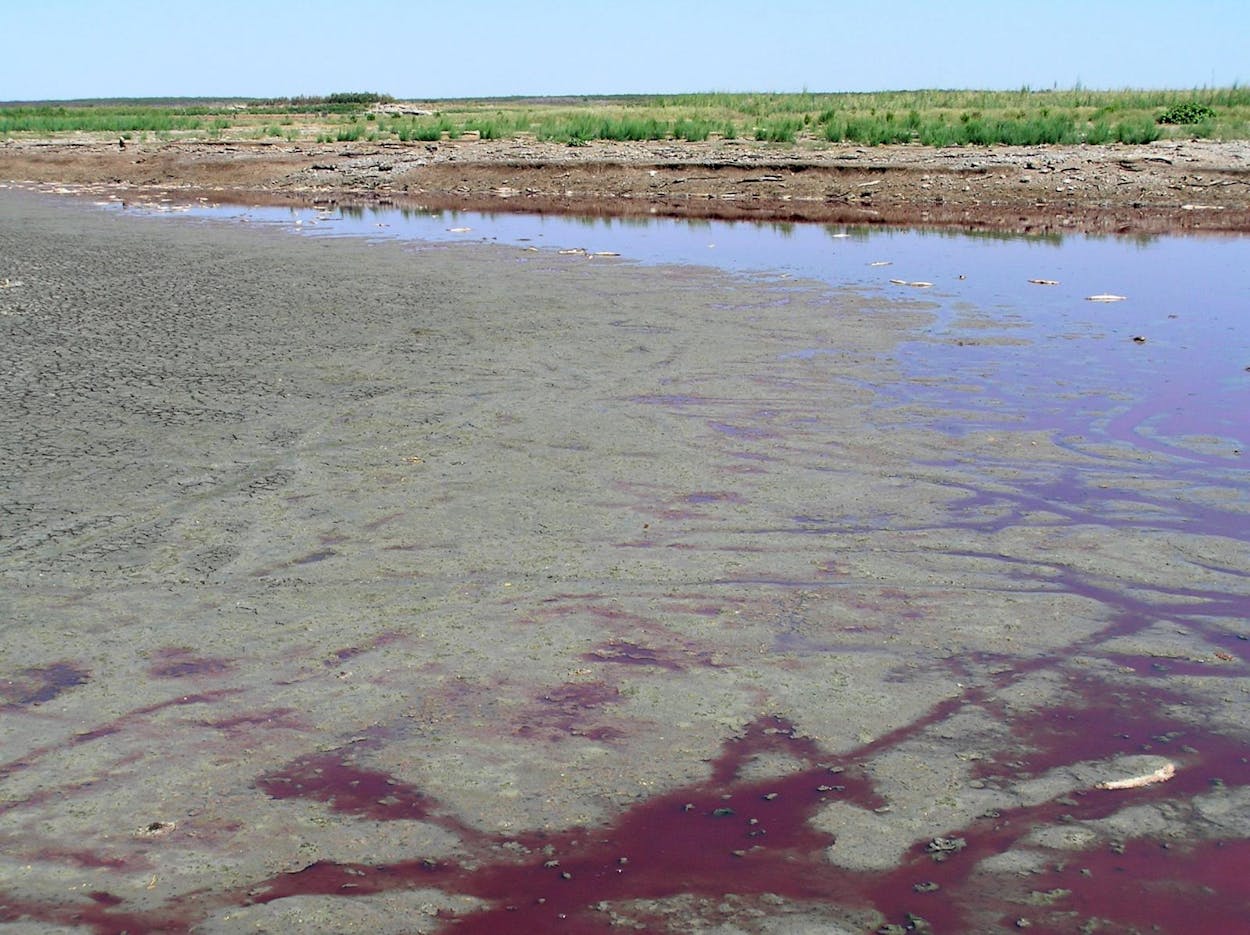RETURN OF THE DUST BOWL
We wish that it was just a headline. EARTH magazine talked to geoscientists who predict that “over the next two or three decades, the American West . . . will transition to a climate that may make the 1930s Dust Bowl seem mild and brief.”
Lawrence Smith at UCLA said there is tree-ring evidence of past droughts lasting fifty to seventy years, which means we could be kicking off another that is just as long. Most sobering of all is his comment about the Panhandle’s cotton crops. “They’re done,” he says. “They are going to revert to dust.”
WHERE’S THE WATER COMING FROM?
The Houston Chronicle and the Texas Tribune explored several aspects of this question. The Chronicle published a three-part series that includes stories about usage and planning, the potential for desalination, and the water needs of energy production (including in both coal and fracking processes).
The Tribune visited Groesbeck, one of eighteen cities in the state that is in danger of running out of water in the next six months. (Click here for an interactive map). Susannah Jacob’s article suggests that without water, there won’t be a Groesbeck, while one resident wonders why the town’s car washes are still open.
NO FOOD FOR MONARCH BUTTERFLIES IN THE HILL COUNTRY
Monarch butterflies usually make their way through Central Texas to their wintering grounds in Mexico. But this summer, reported the San Antonio Express-News, there haven’t been enough flowering plants to nourish them.
That both robs Texas of some beauty (and pride: the Monarch is our state insect) as the butterflies head west looking for other food sources. Smaller, slower butterflies are particularly affected, as by the time they reach the nectar grounds there’s nothing left.
EVEN OUR BARBECUE IS NOT SAFE
Is your brisket getting more expensive? Texas-based reporter August Skamenca filed a radio story for CBS News Weekend (the link is to an MP3 file) on the drought’s effect on ranchers and the soaring price of beef, including comments from Smitty’s pitmaster John Fullilove (full disclosure: Skamenca conducted his interview at the Texas Monthly BBQ Festival).
“Gonna take a couple of years for Texas to build their beef back up,” Fullilove told him. “I mean, there’s not as many cattle as there was.”
(If you play or download the MP3, you’ll find the story at around the seventeen-minute mark.)
FAIRWAYS AND BROWNS
Golfers are not exactly popular with the water conservation crowd, but Golf Course Industry‘s Jeffrey D. Brauer said Texas’s eighteen-hole addicts are taking the drought (and city watering restrictions) in stride.
“Conditions conspired to show us just how little water golf courses could survive on, even if few of us really wanted to know this in anything other than theory,” he wrote. “Golfers, surprisingly, accepted it as a part of nature. If brown wasn’t beautiful to them, at least brown golf was better than no golf.”
Brauer suggests the summer was a “teachable moment” that could prompt the golf industry to think more seriously about water savings in the future, in terms of both course design and maintenance.







